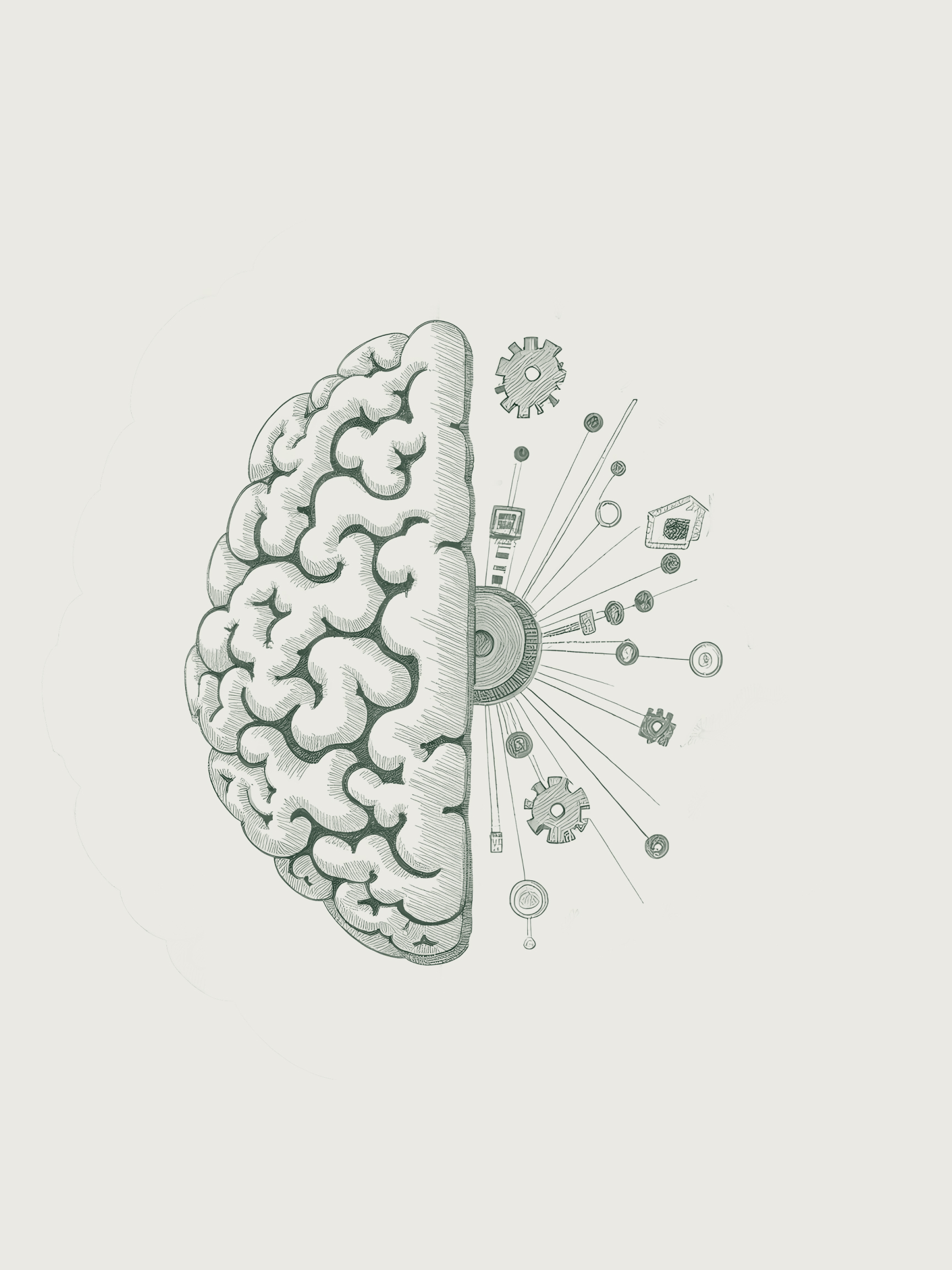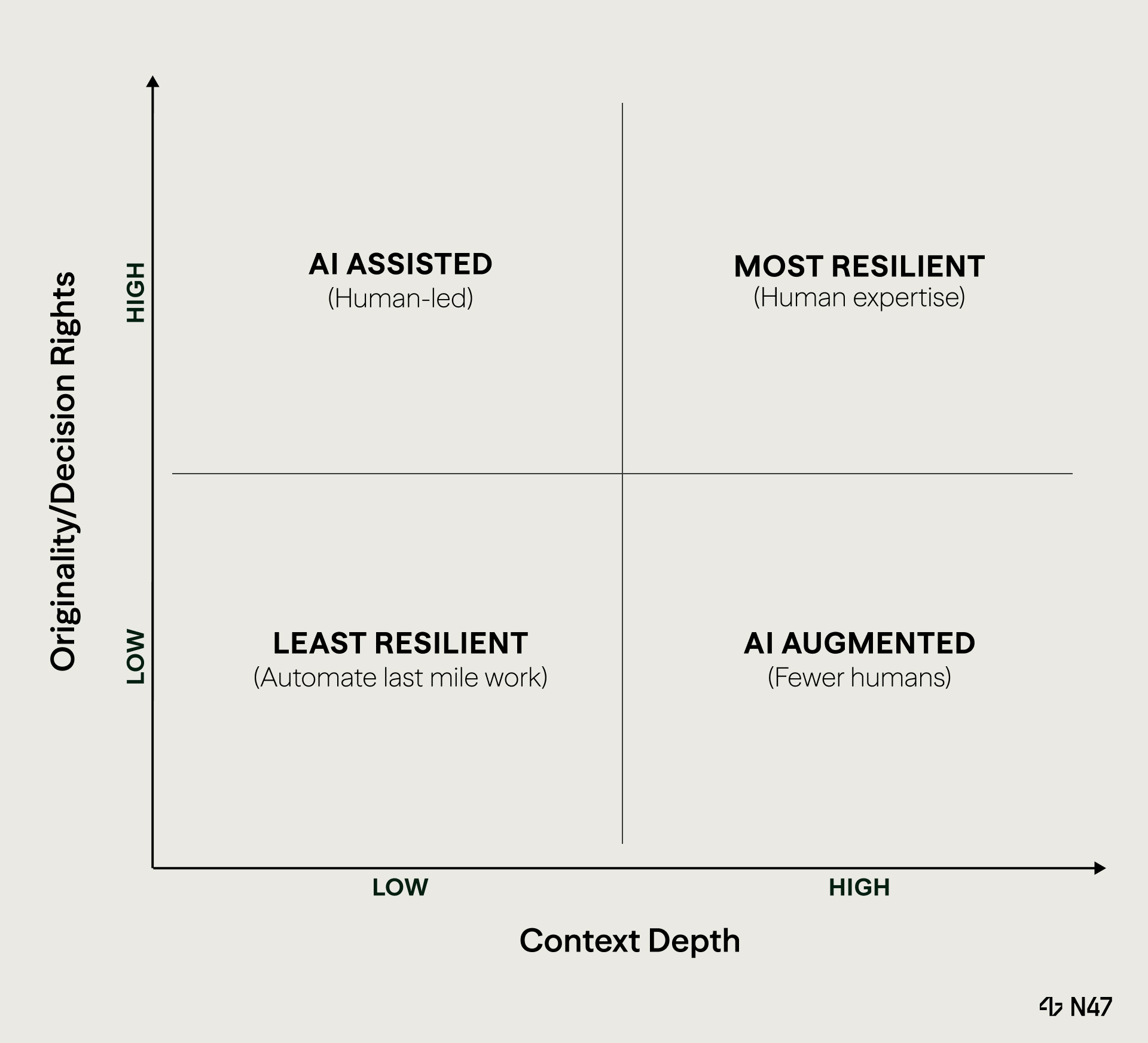
Last-mile work is going away
Ever heard of typing pools? Companies employed armies of people who mastered document mechanics but never originated ideas. Word processors eliminated that work overnight. Now, machine intelligence is replaying that pattern at a massive scale, targeting the vast category of last-mile knowledge work.
The question isn't whether it's happening. It's where to build.
The numbers tell a clear story. Estimates suggest that workflow shifts from machine intelligence could expose roughly 300 million jobs to automation, even as overall productivity climbs. That's directional, not destiny, but it sets the scale we're talking about.
In a deployment with about 5,000 customer support agents, a generative AI assistant raised productivity approximately 15% on average, with the biggest gains among less-experienced agents. Why does that matter? The last mile is getting thinner, fast. Analysts estimate $2.6 to $4.4 trillion in annual value from generative machine intelligence, concentrated in marketing, customer operations, and software.
These aren't abstract futures. This is happening now.
What makes work "last-mile"?
Here's the simple test. A task is last-mile if it checks most of these boxes:
- Shallow domain depth: you can learn it via SOPs or a bootcamp
- Low originality: success means correct formatting or template matching
- Stable input-output mapping: predictable results from structured inputs
- Low accountability: someone else owns the business outcome
- Tool-centered identity: you're "the Salesforce person," not "the person who closes deals"
The framework below shows where different types of work sit based on context depth and decision rights.

Machine intelligence makes tool operation abundant. What's scarce now? Human-to-human interaction, motivation, emotional intelligence, trust, and accountability for decisions.
Work anchored in relationships and judgment becomes more valuable as the button-clicking layers compress.
Where the real opportunity lives
If you're building to replace last-mile work, here's what actually matters.
- Go after the judgment layer above the task: Instead of helping people write SQL faster, build something that lets domain experts define what good analysis looks like, then generates and validates queries automatically.
- Sell to the leaders: They're realizing their operator headcount is about to compress. They need tools that let smaller, more senior teams operate at scale.
- Compete on context depth: Your wedge is understanding a specific domain so well that your AI can make decisions, not just suggestions.
- Build systems: AI modules that work together across workflows create lasting moats. Your advantage comes from integrated intelligence, not isolated features.
The market is already pulling hard in specific sectors where the pain is immediate.
Where labor shortage creates pull
We’re seeing bottom-up pull, not just top-down hype.
In sectors starved for skilled labor, the adoption curve is steep because the pain is immediate.
- Accounting: Over 300,000 CPAs have left the U.S. workforce. Finance leaders need automation to stay compliant and close the books.
- Healthcare administration: Nursing and provider shortages, plus documentation overload, are driving demand for systems that automate coding, charting, and compliance so clinicians can spend more time with patients.
- Construction management: Project managers are aging out while complexity grows. Leaders need systems that automate scheduling and coordination so they can focus on solving site problems instead of managing paperwork.
- Field services and logistics: Skilled technician shortages and rising coordination costs are forcing operators to do more with fewer people. They need systems that cut overhead and let smaller crews handle larger territories.
- Customer support: Burnout and churn mean leaders are buying automation not for cost savings, but to stabilize service quality and protect brand trust.
In each of these, the market is already demanding better AI. Builders who can encode expertise into software will find pull, not push demand.
How builders are winning today
Here's what this looks like when builders get it right.
- Aurasell builds the first AI-native CRM that automates account research, opportunity scoring, and data cleanup. This frees sales reps from CRM hygiene to focus on the human work that actually closes deals: building trust, handling objections, and nurturing relationships.
- Nominal tackles the accounting last mile with an AI-native ERP that automates month-end close, reconciliations, and consolidations, allowing finance teams to shift from data entry to strategic decisions.
- Patlytics supports the full patent lifecycle with their AI-powered platform that helps law firms, in-house teams, and IP professionals navigate the complexities of patent prosecution, litigation, licensing, management, and more.
- Two Dots deploys an end-to-end underwriting agent that autonomously verifies income and detects fraud for property managers, converting site staff from document checkers to relationship builders.
Each of these startups identified where humans spent time operating tools and shifted that work to AI, elevating what humans actually do best.
What this means for your go-to-market
A few principles that matter:
- Sell the human win: Buyers rarely want "AI features." They want more time with customers and teams and fewer escalations. Your demo should show a human closing a deal or reassuring a client, with machine intelligence handling the grunt work in line.
- Land with one decisive workflow: Replace a painful last-mile (tier-1 network change requests, renewal prep, design variant creation). Once you own that workflow, expand into adjacent steps.
- Make context your moat: The real value in vertical AI goes to builders who can ingest tribal knowledge that foundational models can't access (e.g., the unwritten rules, edge cases, and institutional memory living in Slack threads). Your stickiness grows with each piece of domain expertise you encode.
- Price the outcome: Charge based on resolved workflows, approved changes, or qualified meetings. Buyers will pay when they see throughput and relationship metrics move and clear and understandable ROI.
- Prove safety on day one: Ship with guardrails, such as read-only modes, dry-runs, diffs, and approvals. In network, security, and enterprise IT can be your advantage.
Conclusion
Machine intelligence should automate mechanical execution while leaving judgment work to humans. Build products that handle last-mile tasks so people can focus on what drives real business outcomes: trust, relationships, and strategic decisions.
Thin services that repackage vendor know-how without deep domain ownership are fragile. Vertical solutions that bottle expert decision-making, not just UI generation, will command better margins. Career ladders will reconfigure. Expect fewer "operators" and more "owners."
Where should you place machine intelligence to free humans for trust, taste, and decisions? If you're wrestling with that question, let's talk


